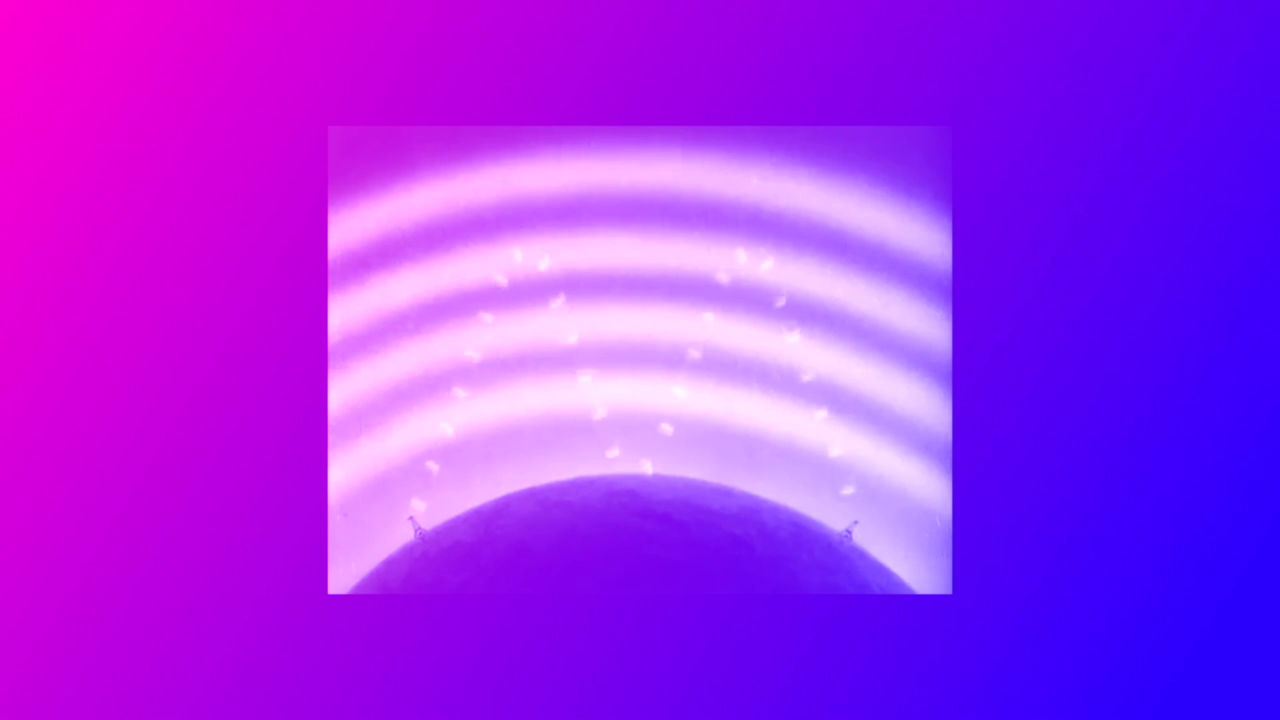Breadcrumb
“From Aurora to Geospace” by Hanna Husberg & Agata Marzecova
Towards Atmosperic Care, a research collaborative between Hanna Husberg and Agata Marzecova, will open their exhibition From Aurora to Geospace in Hobusepea gallery at 6pm on Thursday, June 30, 2022. Exhibition will be open until July 24, 2022.
How do we depict something? Not only in artistic contexts but also in more scientific, more enlightening context? How do we agree on what is aurora and what is not?
From Aurora to Geospace explores how historical interest in visible atmospheric phenomena, notably the aurora borealis or northern lights, has contributed to the uncovering of invisible processes and regions of near-Earth space (also called geospace) that are made perceptible only with the help of science. Rather than observing atmospheric phenomena as such, the installation looks at the instruments, historical circumstances, events and ideas that make atmospheric processes visible and thereby contribute to the construction of novel atmospheric imaginaries and sensibilities. Scientifically, the auroral phenomenon can be described as the coming together of forces from the Earth’s magnetosphere, the ionosphere (the region 70 km and above the Earth’s surface) and the sun’s particles. Irregularities in the ionosphere, also known as space weather, produce auroras and similarly affect radio, communication and navigation systems.
Due to low solar activity there were very little auroral events during the medieval period, and in 1707, after an absence of more than a hundred years, great spectacles of auroras reappeared. Auroral displays were visible as far south as France and Italy, at latitudes where no-one had seen aurora before. It was the beginning of the Enlightenment, and auroras were in the spotlight of knowledge production. This also drew attention to the arctic Fennoscandian territories, which during the last centuries have became one of the most important natural laboratories for conducting scientific research on the functioning of the atmosphere as well as the whole geosphere, and therefore also as a place where global atmospheric imaginaries are shaped. Today, the region hosts the ionospheric radar EISCAT infrastructure (the second largest European research project after the Hadron Collider) which studies the ionosphere as well as auroral phenomena by transmitting and receiving signals between large antennas and facilities located in Sodankylä, Kiruna, Tromsö and Kilpisjärvi.
Thanks to the conceptual tools of ionospheric science (to which facilities and places such as EISCAT contribute), planet Earth is no longer an isolated Blue Marble in the dark vacuum of outer space. Instead, it can be understood as energetically and materially interconnected with its galactic environment. However, such planetary sensibility is not simply accessible through human senses and embodied experience. Rather, it is dependent on technoscientific infrastructures and expertise only made possible through the entanglements of science, militarisation, commercialisation and the datafication of nature. In this light, we ask how to meaningfully consider, and care for, the representational, yet material sphere between what is perceptible and imaginable, and the outer space that, while difficult to comprehend, is permeated with satellites, and other technologies and environmental processes that condition our lives?
Combining photography, historical and scientific imagery, drawing, sound and text, From Aurora to Geospace approaches auroras as an access point to the upper atmosphere. It draws on conversations with scientists and researchers encountered during field trips to the ionospheric radar EISCAT infrastructures and their surroundings, and uses academic and historical sources as well as scientific materials brought up by the people we met, such as the prevalence of diagrams for shaping how we imagine vast, yet invisible, environments out of reach for the human senses. Situated and embodied understandings of science as always historically grounded, partial and never perfectly objective do not trivialize nor diminish the importance of scientific evidence, instead they create opportunity for engagement. In line with this, the different elements of the installation are organized as a fragmentary vocabulary, or clavis, providing some keys for interpretation without presupposing hierarchical relations between the scientific, aesthetic, historical and political.
Towards Atmospheric Care is a long-term research collaborative between Stockholm-based visual artist Hanna Husberg and Tallinn-based interdisciplinary researcher Agata Marzecova which explores air as a naturalcultural phenomenon situated in the nexus of media, science and technological mediation. Using installation, performance, writing and critical analysis, the project examines the overlapping boundaries between the aesthetic, science and politics of air and atmosphere. In addition to artistic and academic outcomes, the duo advances interdisciplinary pedagogic approaches, including joint teaching at the Estonian Academy of Arts as well as co-learning workshops (Heavens Field_Notes, 2019; Fantasies of Seamless Interoperability, 2021; How to care for air? Thinking lab, 2022). Their collaboration has been supported by the Technosphere Campus (HKW Berlin, 2016), The Seed Box (Mistra-Formas Collaboratory, 2017), the Bernadotte Fellowship (Royal Swedish Academy of Fine Arts, 2019-20), Kone Foundation (2020-22), and several residencies.
Exhibition is supported by the Cultural Endowment of Estonia, Kone Foundation
Exhibitions in Hobusepea gallery are supported by the Cultural Endowment of Estonia, Estonian Ministry of Culture and Liviko Ltd.
Additional information:
Hobusepea Gallery
Tel: +372 56 451 591
+372 52 85 324
+372 6 276 777
E-mail: galerii@eaa.ee
Hobusepea 2, Tallinn 10133
http://galerii.eaa.ee/hobusepea
Wed‒Mon 12.00‒18.00
